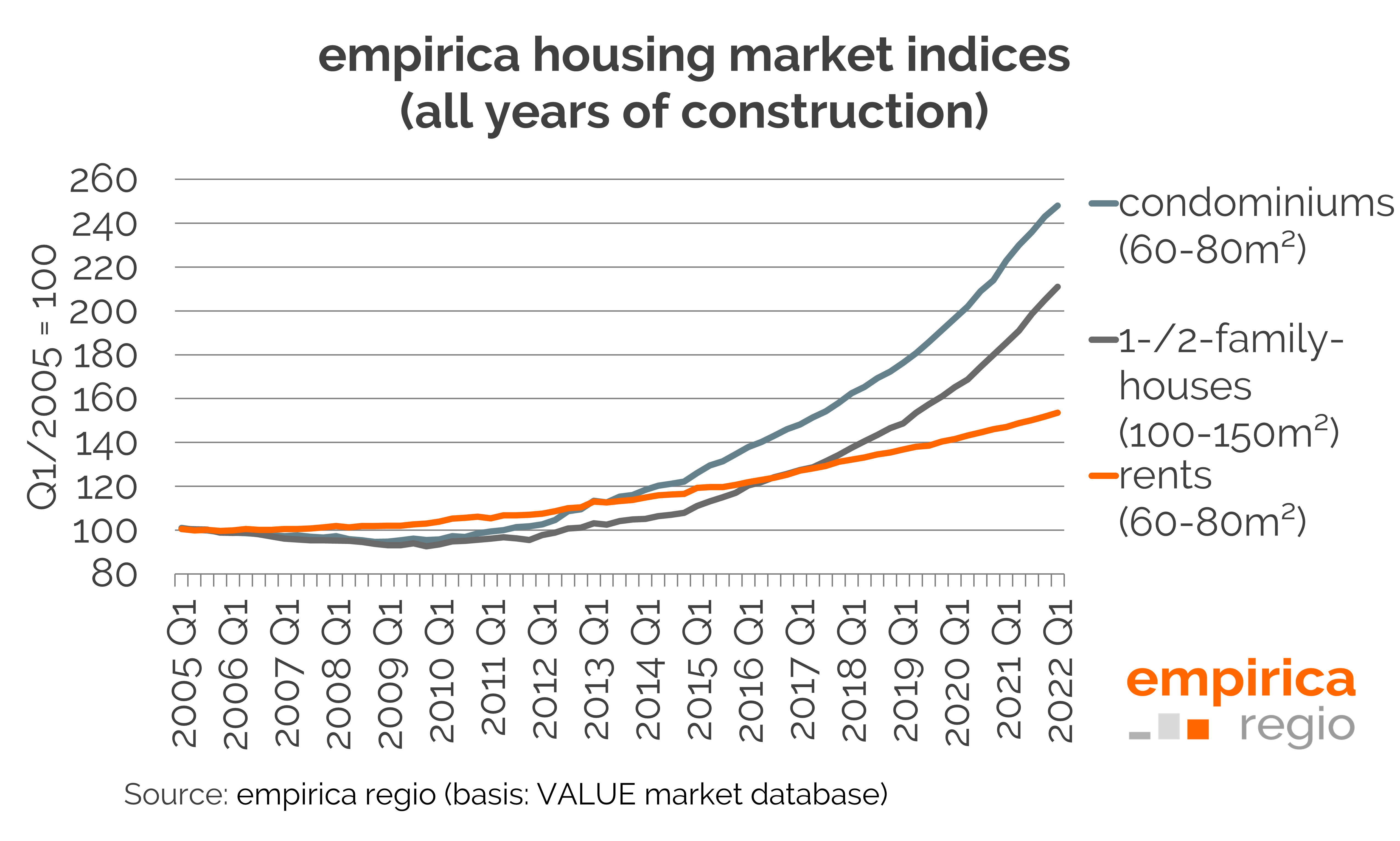Singles and families have to pay the most for their flats - Munich is the front-runner
Singles and large families pay the highest rents per square metre in Germany. This is the key finding of a recent analysis by empirica regio GmbH. Especially in the large cities and major cities, the so-called A-cities, families have to spend more than others on rent.
They pay 13.71 euros per square metre for flats with five or more rooms, and one-room flats can be had for an average of 13.50 euros per square metre. Both are above the average rent of 12.79 euros per square metre. Two-room flats (12.21 euros per square metre), three-room flats (12.05 euros per square metre) and four-room flats (12.77 euros per square metre) are cheaper.
However, this trend is also evident in the somewhat smaller towns: there, one-bedroom flats and those with five or more rooms are also more expensive than other flats. The survey by the economic and real estate data provider empirica regio suggests that it is precisely in growth regions that the highest rents per square metre are charged for single and family-friendly flats. In stagnation and shrinking regions, on the other hand, single flats with one or two rooms are in high demand.
In 2021, the average cold rent per square metre for a one-room flat was 9.84 euros. Flats with five or more rooms were priced at 8.78 euros per square metre. Flats with two rooms, on the other hand, were at 8.72 euros, with three rooms at 8.41 euros and four-room flats at 8.42 euros.
Rental dynamics in the conurbations remain high
In a comparison of metropolitan areas, Munich clearly leads the field, with the highest prices in Germany. For example, one-bedroom flats in the Bavarian capital cost an average of €20.55 per square metre. Family-friendly flats with five or more rooms are also significantly more expensive there than in the rest of Germany (18.40 euros per m²).
At the same time, rent dynamics in the metropolitan areas will remain high, at least until 2021. Especially in the area of large flats, there is an above-average rent development. For five or more rooms, rents in the A-cities increased on average by 5.9 per cent from 2020 to 2021. For one-room flats, the increase was only 3.6 per cent. Other flat types were also below this dynamic: two-room flats (+3.3 per cent), three-room flats (+2.8 per cent) and four-room flats (+4.2 per cent).
Too few family flats in new buildings
What does this result mean? “We see that especially in big cities too few family-friendly flats are being built,” said Jan Grade, CEO of empirica regio. This drives this group of young families, which potentially has purchasing power and is important for urban development, into the surrounding areas, Grade continued. “For cities, this will be a problem in the long run if more supply is not created.”
According to the analysis by empirica regio, construction completions of flats with four or more rooms (here including detached and semi-detached houses) in the A-cities declined from an average of 8,500 flats per year to 6,700 flats per year in a comparison of the five-year periods 2011 to 2015 and 2016 to 2020. In addition, dwellings with four or more rooms accounted for only 15 instead of 29 per cent of total construction completions. At the same time, the number of completed dwellings with one or two rooms increased two and a half times from 7,400 to 19,100 annually, and the share of all completions rose from 25 to 42 percent. The data show that the number of households with three or more persons in the A and B cities has increased more strongly than the number of small households in recent years.
Create more supply
“The real estate industry is currently often reacting to the growing number of households by completing single flats. The target group of families is in danger of being lost from view,” Grade sums up. “In order to absorb the additional burden on singles and families, one-bedroom flats and large flats must become more affordable - this can only be done by increasing supply.”
Press contact
Jasper Radü
PB3C GmbH
Tel.: +49 40 5409084-21
radue@pb3c.com




